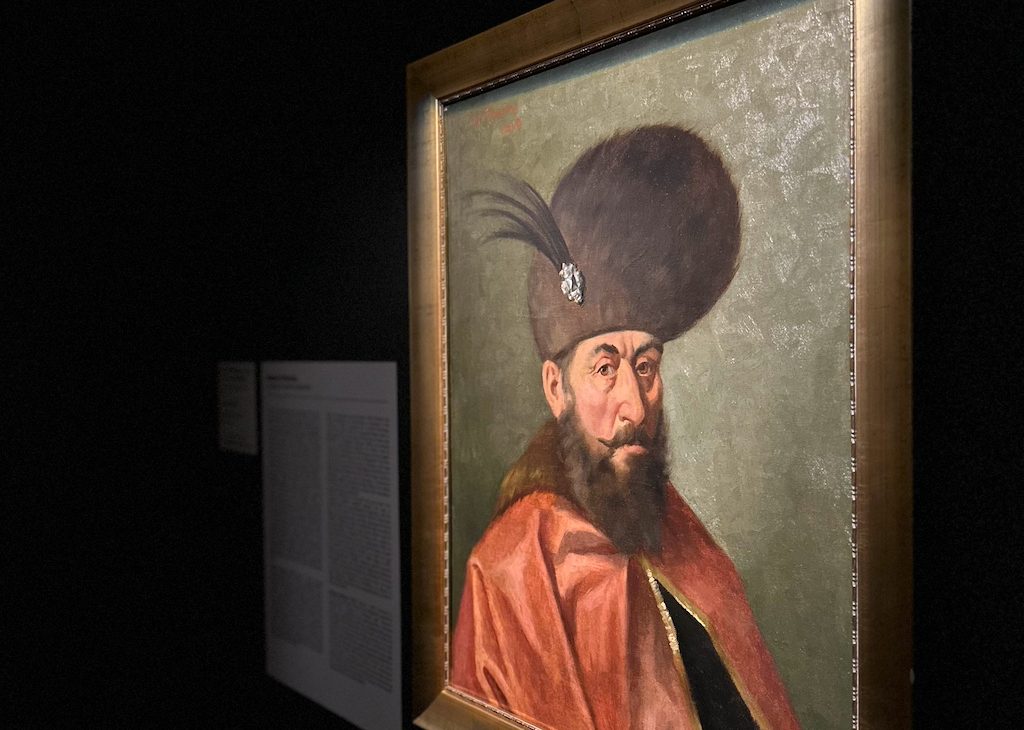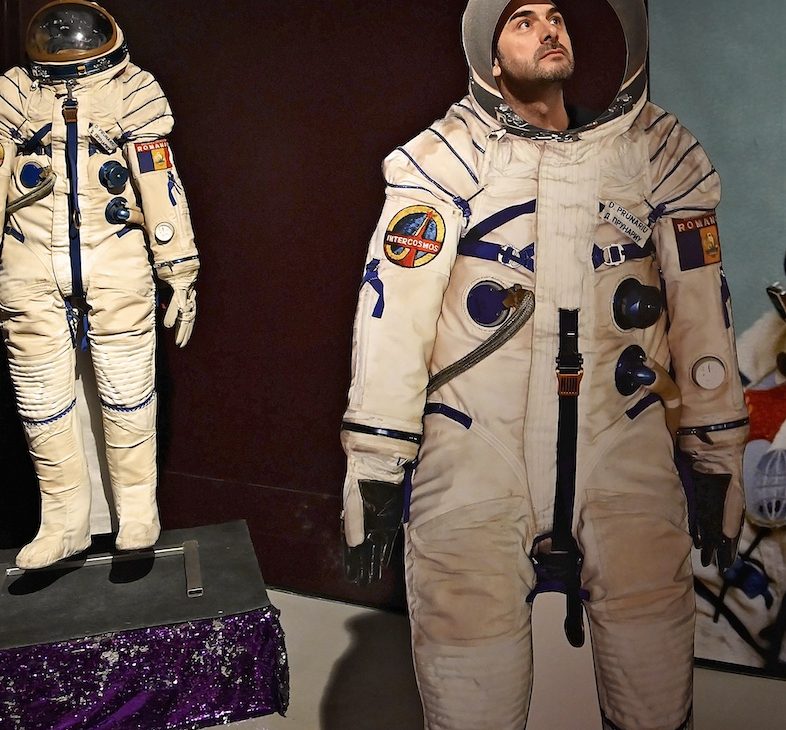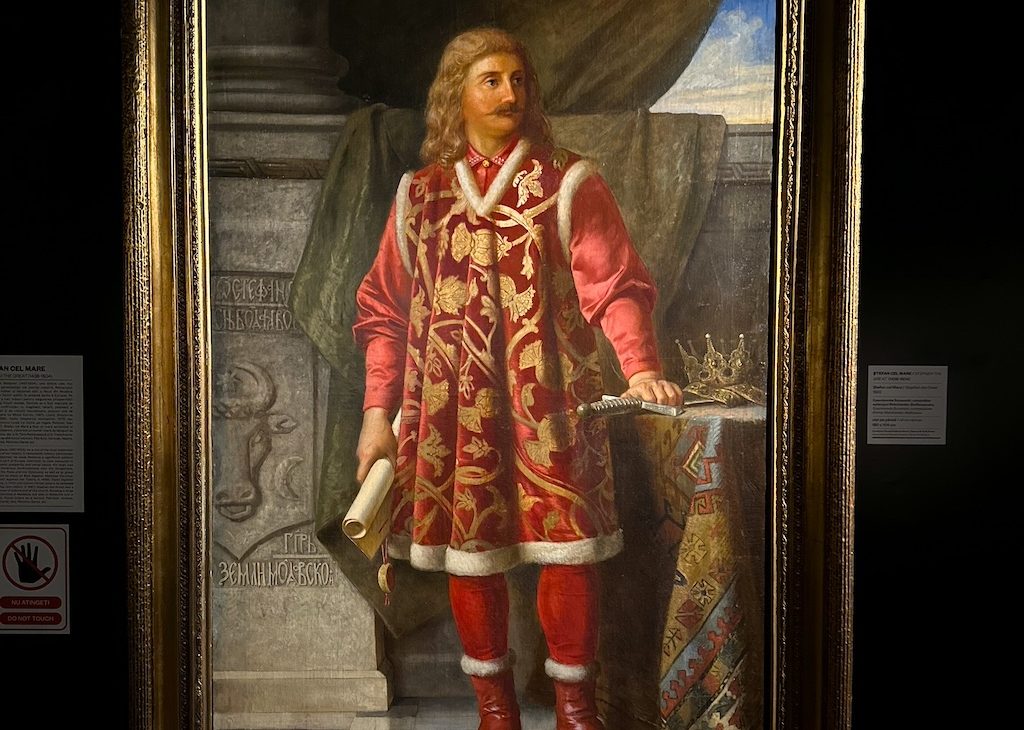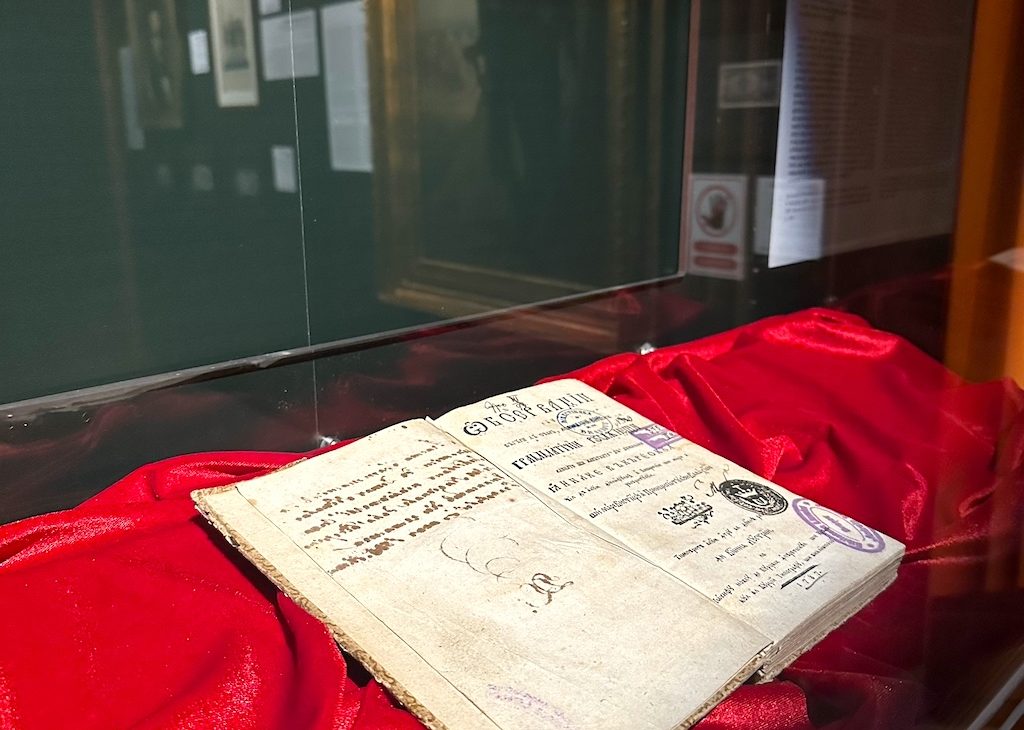The “History of Romania in 100 Portraits” exhibition, carried out in partnership with the National Museum of Romanian History and the Romanian Cultural Institute, brings together works and objects from the heritage of 36 institutions and private collections, many of which are exhibited for the first time or very rarely.
The great rulers of Romania meet Lipscani.
The section dedicated to the most famous and essential Romanian rulers presents a series of treasure pieces. The true appearance of Vlad the Impaler (1431-1476) is revealed by an engraving by Bartholomaeus Gothan, Lübeck (dated 1488-1493), from a private collection. Up to this moment, two engravings illustrating Vlad Țepeș are known, printed in incunabula (copy from a book printed in the first years of the introduction of printing, before the year 1500), namely, a single copy from “Dracole Waida”, by Hans Sporer, Bamberg, 1491, kept at the British Library, London (a photocopy is kept at the Bucharest Central University Library) and a single copy of “Uan Deme Quaden Thyrane Dracole Wyda”, by Bartholomaeus Gothan, Lübeck, 1488-1493. The Lübeck incunabulum, from 1488-1493, is the first edition, containing 12 pages relating to the stories about Vlad the Impaler. The engraving representing the voivode Vlad Țepeș is accompanied by a text printed in a dialect from northwest Germany.
Michael the Brave (1558-1601) is evoked by the painting “Scene of the killing of Michael the Brave” by Constantin Lecca (1807 – 1887), from the collection of the National Art Museum of Romania, but also by Grigore Romano (collection of the National History Museum of Romania).
A large-scale work presents Stephen the Great (1438-1504) – the portrait found in many history textbooks comes from the Neamț National Museum Complex / Roman Art Museum. Among the 100 works in the exhibition is the iconic portrait of Tudor Vladimirescu made by Theodor Aman from the National History Museum of Romania collection.
The first photographer of the Romanian Countries
Considered the first photographer from the Romanian Countries, Carol Popp de Szathmári (1812-1887), former painter and photographer of the ruling Court under Gheorghe Bibescu, Barbu Știrbei, Alexandru Ioan Cuza and Carol I. Visitors can admire “Cupid” (dated 1848), considered be the first photograph taken on the territory of the Romanian Principalities, and the portraits of Alexandru Ioan Cuza, Elena Cuza, and King Carol I.
The exhibition evokes emblematic moments of Romania’s history through a series of paintings and objects. Among these, we mention Costache Petrescu’s “Constitution of Bucharest from June 11, 1848” from the collection of the Romanian Academy Library.
Extremely rare objects – from the first Romanian grammar book to Dumitru Prunariu’s cosmonaut suit
And the Military Museum exhibits to the public for the first time the uniforms of King Ferdinand I and Marshal Alexandru Averescu, national rarities, but also the space diver suit worn by the Romanian cosmonaut Dumitru Prunariu during the orbital flight in 1981 (May 14-22) and the blouse worn by this aboard the Saliut 6 Space Laboratory.
Other extremely valuable exhibits that are part of the exhibition come from the Biserica Sfântul Nicolae Museum in Șcheii Brașovului – “The first Romanian School”: the first Romanian grammar book – “Observations or observations on the rules and regulations of Romanian grammar” by Ienăchiță Văcărescu (1787 ), “Gospel with Teaching” of Deacon Coresi, from 1580-81, a silver censer from 1515 given to the Church of Saint Nicholas in Brașov by the founder Neagoe Basarab (1459-1551) and restored in 1767.
The great poets and writers of Romania gathered in a palace.
The exhibition also presents a section dedicated to the titans of Romanian literature – Mihai Eminescu, Ion Creangă, George Bacovia, Tudor Arghezi, Nichita Stănescu, etc. Also from the Museum of the Church of Saint Nicholas in Șcheii Brașov – “The First Romanian School”- a very rare letter from Mihai Eminescu – composed from the Dobling sanatorium. Next to it is the portrait of Mihai Eminescu, made at the age of 18.
Other valuable works: photographs of Ion Creangă and I. L. Caragiale from the heritage of the National Museum of Romanian Literature, Iași, a portrait of Ion Grigore with George Bacovia from the collection of the Bucharest City Museum, a portrait of Tudor Arghezi signed by Corneliu Baba, from the collection Bucharest Municipal Museum, engravings by Nichita Stănescu (in book-object form), made by one of Romania’s greatest contemporary engravers, Mircia Dumitrescu. Mihail Sadoveanu (a bust of Ion Vlasiu) also traveled from the Brukenthal National Museum in Sibiu.
And Romania’s most important sports personalities are present in the exhibition through a series of personal items. Among them are Elisabeta Lipă’s rowing boat used both in training and in competitions, from the Snagov National Sports Complex, the presentation suit from the Olympic Games in Athens, from the Bucharest Sports Museum, a series of T-shirts by Gheorghe Hagi, Simona Halep’s 2012 US Open tennis ball and racket from the personal collection of Cristian Şimonca (Poison Blog) and many others.
Art Safari Program (until July 28, 2024)
Thursday-Sunday – 12:00-21:00 (last entry – 20:30)
Tickets: art safari. ro or directly from the entrance
Palatul Dacia-Romania, street Lipscani, no. 18-20, Bucharest









